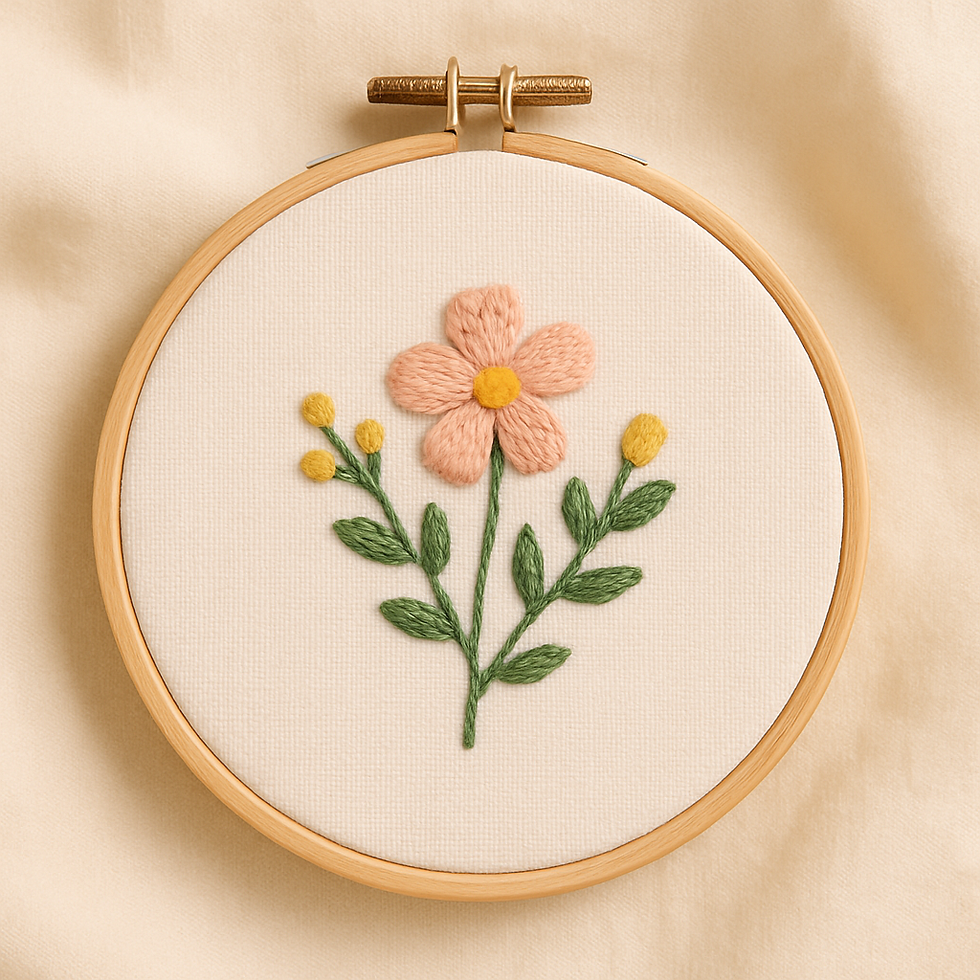Best Embroidery Transfer Pattern Methods: Which One Should You Choose?
- Happy Sheep

- Sep 2
- 2 min read
Transferring designs is one of the most important steps in embroidery. Without a clear outline on fabric, even the most beautiful patterns can be difficult to stitch accurately. With so many embroidery transfer patterns and tools available, it helps to know which methods give the best results. Below, we’ll explore three popular embroidery pattern transfer techniques—including their pros, cons, and overall performance—to help you choose the method that works best for your projects.
Stick and Stitch Transfer Paper
For many stitchers, stick and stitch transfer paper is one of the best embroidery transfer methods. It’s easy, reliable, and works across a variety of fabrics.

Pros:
Easy to use—simply print or trace the design onto the transfer sheet.
The paper adheres securely to the fabric during stitching.
When the project is complete, the paper dissolves in warm water, leaving no sticky residue.
Works well on both dark and light fabrics.
Cons:
Slightly more expensive compared to other transfer methods.
Why It Works Well:
Stick and stitch transfer paper provides crisp, accurate outlines and is especially useful on darker fabrics where pen markings may not show up. The clean wash-away removal makes it one of the most dependable choices for embroidery projects.
Heat Erasable Pens
Another widely used option is transferring embroidery patterns with heat erasable pens. Affordable and versatile, this method is popular for everyday stitching.

Pros:
Budget-friendly compared to transfer paper.
No washing is needed—lines disappear with heat.
Can be erased easily using an iron or even a hairdryer.
Cons:
Requires a light source such as a light box, phone flashlight, or overhead lamp to trace designs through fabric.
On rare occasions, faint lines may remain, though they’re usually barely noticeable.
Why It Works Well:
Heat erasable pens make transferring embroidery patterns quick and cost-effective. Watching the lines disappear under heat adds a fun finishing touch to projects, making them a favorite among hobbyists and professionals alike.
Water-Soluble Pens
Water-soluble pens are often considered a beginner-friendly option because they’re inexpensive and easy to use. However, they come with some risks.

Pros:
Affordable and widely available.
Easy to use for quick tracing.
Cons:
Ink can bleed into the fabric when exposed to water.
May cause permanent damage to finished projects.
Why It Falls Short:
While convenient, water-soluble pens have been known to ruin embroidery due to ink running into the fabric. Because of this, many stitchers prefer more reliable embroidery transfer methods.
Final Thoughts
Choosing the best embroidery transfer method depends on the fabric, project style, and personal preference. For dependable results, stick and stitch transfer paper is worth the investment, especially for dark fabrics. For a more affordable option, heat erasable pens are an excellent choice and provide a smooth, heat-removable outline. While water-soluble pens may be inexpensive, they carry risks that can lead to frustration.
No matter which method is chosen, the right embroidery transfer pattern technique helps make stitching more enjoyable and ensures every design comes to life beautifully.







Comments